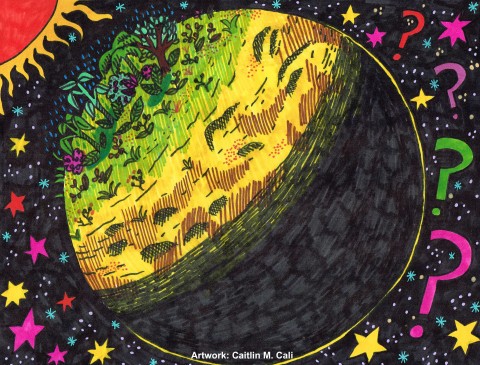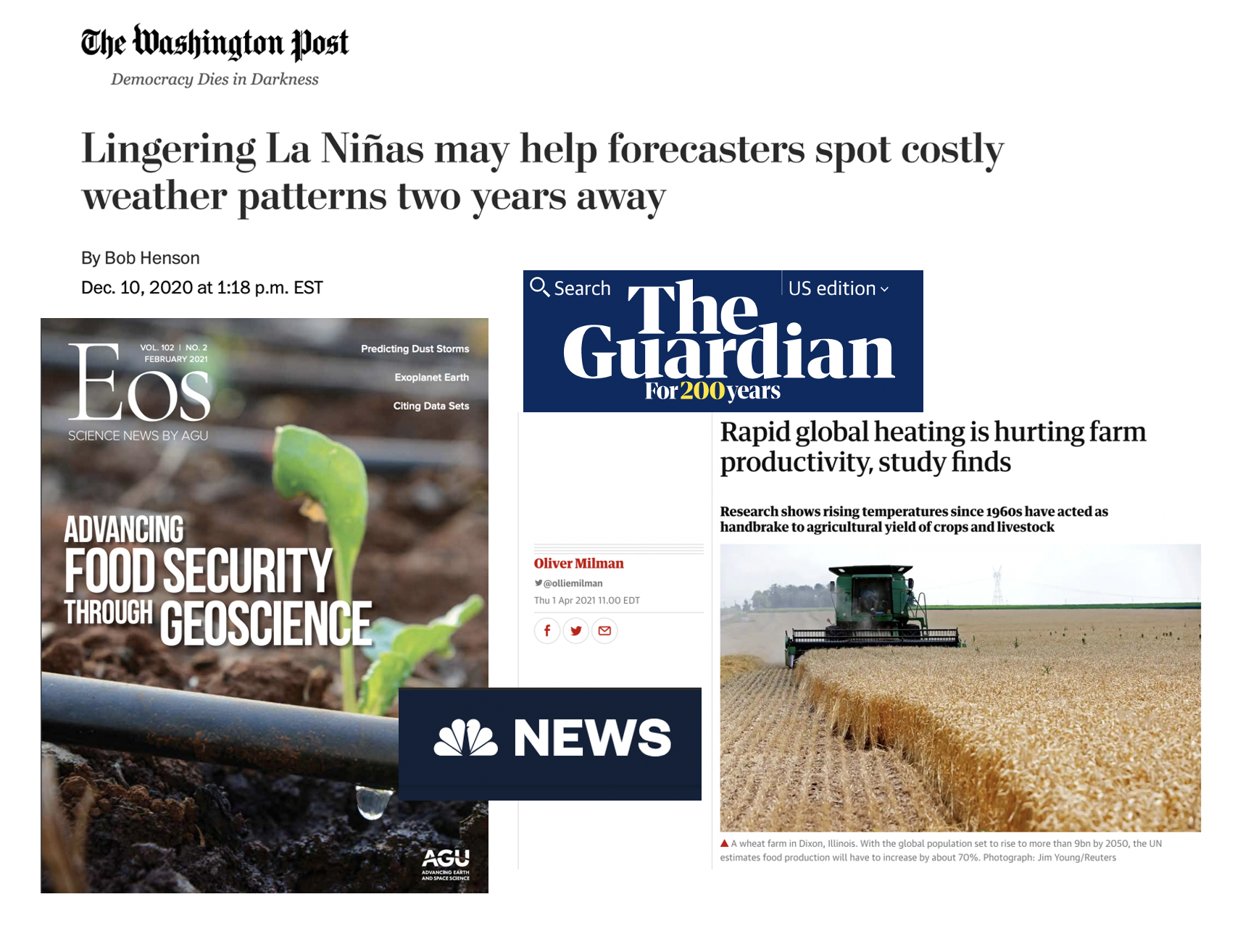Faculty – Climate and Society Master's program, Columbia University
Dynamics of Climate Variability and Change (Fall 2020): co-taught with Dr. Alessandra Giannini
Threats to Urban Food Security (Spring 2021): reading seminar, co-taught with Dr. Cascade Tuholske
Guest Lecturer – Harvard University
Climate variability, change, and food systems (2025)
Guest Lecturer – Washington State University
How does the climate system work? (2021)
Guest Lecturer – Columbia University Irving Medical Center
Introduction to Global and Population Health (2019, 2020,2021)
Course Materials
Below are course descriptions for courses that I have taught, including the course objectives and course syllabus
GR5400 - Dynamics of Climate Variability & Climate Change (Climate and Society Master's Program, Columbia University)
This course provides an understanding of the physical workings of the climate system, and it underpins the goals of the rest of the C+S program. Building on that, students learn through lectures, readings, discussions and exercises, how to interpret climate information like forecasts and observational maps. We cover the physical and methodological basis of forecasts – from weather to climate change – as well as their uncertainties. Students are encouraged to critically assess the suitability of different types of climate information to answer questions of societal interest in discussion and within a group project. Given that climate variability acts on a number of time and space scales, which may be further influenced by man-made climate change, we also address how these aspects of the climate are realized, forecast, interpreted. Solid understanding of the physical system and appropriate usage of climate-related terminology will be emphasized throughout the course.
2020 Course Syllabus
Skills Developed:
Physical understanding of the climate system
Forecast interpretation
Climate literacy
Initial basis to determine suitability of information to society
Communication of scientific material
Outreach
Climate-based creative writing prompt
Below is an artists' rendition of a tidally-locked planet. This was used for a graduate level climate dynamics course and as a prompt for K-6 students in an after-school writing program. For college-level students, the artists rendition can be combined with the first-principles understanding and the climate simulations of Merlis and Schnider (2010) in an activity in which students are provided the constraints of negligible rotation and the location of insolation maximum, then based on first-principles students work in groups to describe the main climate-features of such a planet before coming back together as a class to discuss their solutions and those of Merlis and Schnider. For the writing prompt, students were asked to consider how the environment of this planet differs from our own and write about characters that would inhabit such a planet. The idea is to develop a place-based character study that also opened up discussion of our own climate.




